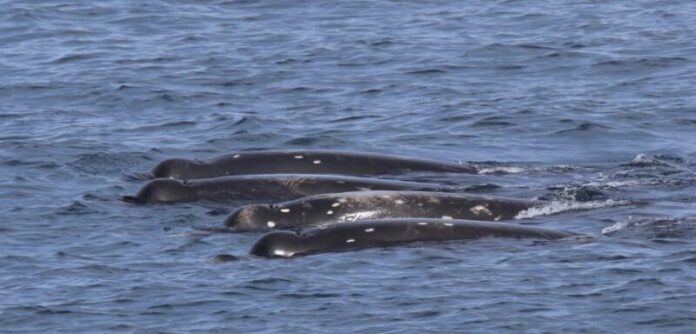Scientists have finally spotted the elusive Sato’s Beaked Whale for the first time since its discovery in 2019. The whale species was first discovered in 2019 by Japanese researchers after finding deceased specimens of the whale. However a paper published in May this year revealed that during the Japanese summer of 2021 a research team had spotted not one but a whole pod of fourteen of the secretive Sato’s Beaked Whale.
Robert Pitman, marine ecologist at Oregon State University, said “It makes you wonder what all else is out there, swimming in our oceans and maybe right in front of us.” Pitman marvels at the fact that the species had remained an enigma in Japan for so long, with its thriving community of cetacean researchers.
The Sato’s beaked whale eluded scientists despite being 7m
The Sato’s beaked whales measure up at an amazing 7 meters, which is roughly the length of a shipping container. Pitman explains that beaked whales are “the least-known large animals on the planet.” with most being elusive and living offshore. To avoid their main predator, the Killer Whale, most Beaked Whale species spend the majority of their time in very deep waters, only coming up to the surface when required.
Overall, scientists know very little about the population and habits of the Sato’s beaked whales. The whales have only been spotted in Japan and Russia, however round bite marks observed on many of the whales suggest they have travelled through tropical waters. The bite marks are most likely from CookieCutter sharks, which only live in tropical waters according to Erich Hoyt, a research fellow at Whale and Dolphin Conservation in the United Kingdom. Hoyt was also one of the co-authors on the paper about the 2021 sighting.
Tadasu Yamada, former curator at Japan’s National Museum of Nature and Science, was one of the co-authers of the orginal paper describing the discovery of the species in 2019. Yamada hopes that researchers can collaborate with the public to crowdsource more information about Sato’s beaked whales. Yamada says “If we get help from the general [public], that will help establish some basic knowledge on the species,” adding that whale watchers already report unconfirmed observations of Sato’s beaked whales about twice a year.
It is hoped that this more collaborative approach will help researchers understand the species which was deemed near threatened by the International Union for Conservation of Nature in 2020, a year after its first discovery. Having a better understanding of the whales population, habits and behaviour will help guide conversation needs.

